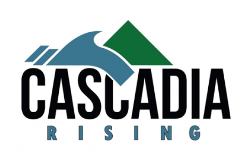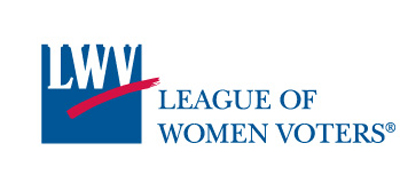— from the Federal Emergency Management Agency (FEMA) —
A 9.0 magnitude earthquake along the Cascadia Subduction Zone (CSZ) and the resulting tsunami is the most complex disaster scenario that emergency management and public safety officials in the Pacific Northwest could face. Cascadia Rising is an exercise to address that disaster.
June 7-10, 2016 Emergency Operations and Coordination Centers (EOC/ECCs) at all levels of government and the private sector will activate to conduct a simulated field response operation within their jurisdictions and with neighboring communities, state EOCs, FEMA, and major military commands.
Conducting successful life-saving and life-sustaining response operations in the aftermath of a Cascadia Subduction Zone disaster will hinge on the effective coordination and integration of governments at all levels – cities, counties, state agencies, federal officials, the military, tribal nations – as well as non-government organizations and the private sector. One of the primary goals of Cascadia Rising is to train and test this whole community approach to complex disaster operations together as a joint team.
Recent subduction zone earthquakes around the world underscore the catastrophic impacts we will face when the next CSZ earthquake and tsunami occurs in our region:
- Indonesia (2004): M9.1 — 228,000 fatalities
- Chile (2010): M8.8 — 500 fatalities
- Japan (2011): M9.0 — 18,000 fatalities

**If you are reading theOrcasonian for free, thank your fellow islanders. If you would like to support theOrcasonian CLICK HERE to set your modestly-priced, voluntary subscription. Otherwise, no worries; we’re happy to share with you.**









If there were a magnitude 9.0 Cascadia earthquake, the worst immediate danger to be faced by Orcas Islanders would be from a tsunami, whose first wave would reach us about 1.5 to 2 hours later. And the worst effects of that would occur at the ends of long, south-facing bodies of water — especially Eastsound. WA state’s Chief Hazard Geologist Tim Walsh spoke about this threat in an Orcas Crossroads lecture about three years ago, and he gave me a preliminary simulation of what the tsunami waves would look like and when they would hit. It’s a very large file, but I’d be willing to share it with interested parties, perhaps via Drop Box.
Immediate effects of the earthquake itself on Orcas Island would also be problematic but probably not as severe as those from the tsunami. Longer-range impacts due to loss of power, difficulty of getting supplies or reaching the mainland could prove just as bad as the immediate effects of the tsunami.
This is one of the reasons that I proposed a Collaborative Disaster Readiness Grant to the OICF Give Orcas Catalog to provide hazard mitigation, consultation, and supplies to the licensed early learning centers of Orcas. THIS GRANT WAS ONLY PARTIALLY FUNDED AND I NEED HELP TO RAISE THE REMAINING FUNDS!! If anyone would like to make a contribution or learn more, please contact me. kaleidoscope@orcasonline.com Thanks!!
The worst immediate danger to San Juan County would be 3 to 5 minutes of severe ground shaking during the initial event. Potential immediate impacts could include injuries from falls, building collapse, falling trees, rock and land slides, not to mention potential aftershocks, which could also be powerful enough to knock a person to the ground. Longer range impacts could be damage to anything that could be considered as infrastructure: water,electricity, sewer, communication, medical care, and transportation. One of my favorite quotes from today’s exercise coverage was along the lines of “Washington State will be thrown back to 1850.” Our local Department of Emergency Management has some very helpful information to help people prepare for this type of event which I would highly recommend checking out. Is a link available for more information the Kaleidoscope grant?
Leif — Here’s an inconvenient fact to contemplate: The geologist I think you were referring to in an earlier comment, Tim Walsh, was Washington State’s chief hazard geologist. He certainly was not hawking any book. (And even if he was, so what?) His job is to understand potential hazards in our state based on real data, and communicate them to the public.
Late to this thread, but want to provide some useful information to refine this discussion:
San Juan County has an online map viewer that shows the tsunami modeling for the islands from the Cascadia 9.0 quake. It’s at: https://sjcgis.org/tsunami-inundation/
This is from latest projections from NOAA and WA DNR (Tim Walsh). There’s also a FAQ on tsunamis (and quakes) at http://www.sanjuandem.net/tsunami
Note that most of Orcas is in fairly good shape. Major exception is Crescent Beach with 15+ feet of surge. There is some impact in “downtown” Eastsound. Major impact to islands is South end of Lopez. Keep in mind, these are just models- everyone should leave low lying waterfront if you feel a big quake, no matter where you are in islands. There will be multiple surges for up to 12-18 hours after quake, so stay away from shoreline.
Also- even when there’s no surge, current speeds will be extremely strong- 20-30 knots in some places. Expect significant damage to all waterfront infrastructure.
This is indeed a “worst case” scenario. It might not be as bad- but would be a tragedy of negligence for anyone to lose their life to a tsunami in the islands when all they had to do was walk calmly up to nearby high ground after feeling a major quake (lasting for minutes, or big enough to knock you over).
Reach out to the County Emergency Management Department with questions. We have an office in Orcas Senior Center. 370-0587.